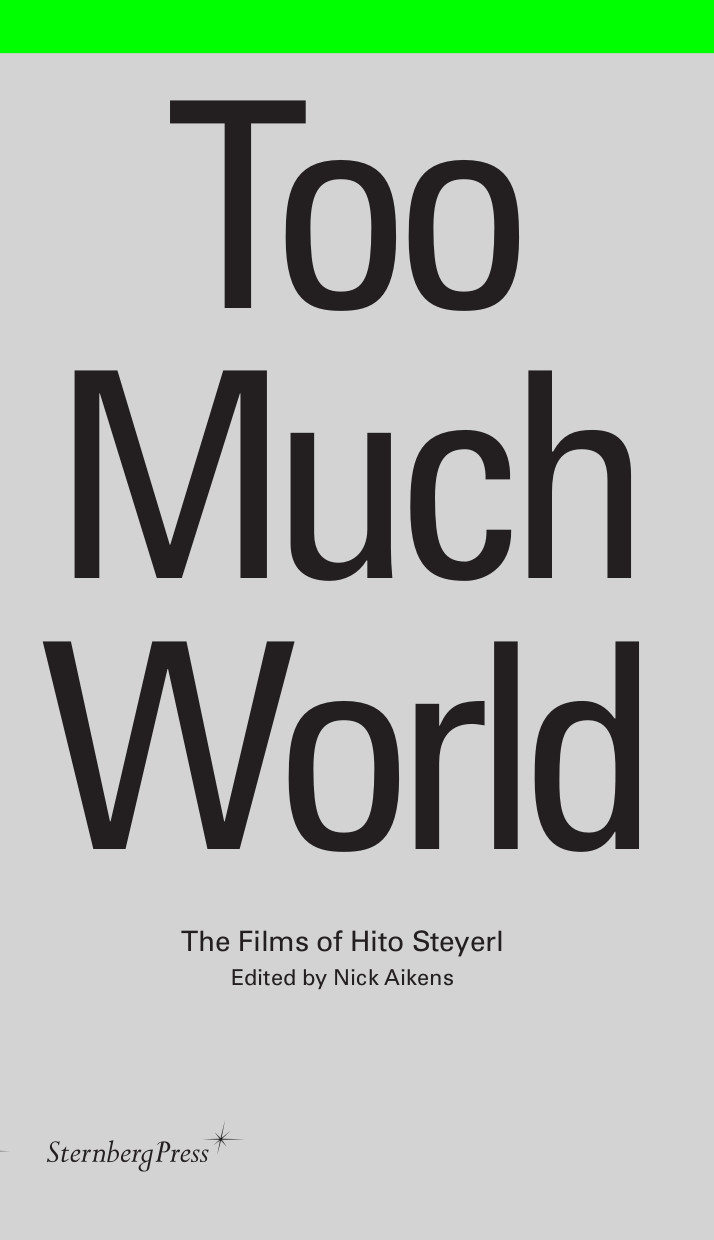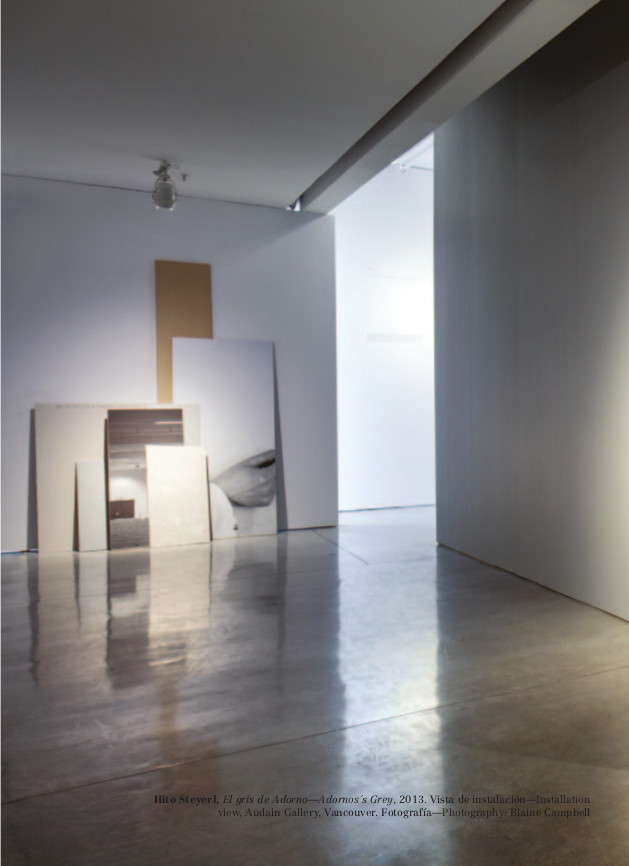Forensic Architecture (ed.): Forensis: The Architecture of Public Truth (2014)
Filed under book | Tags: · aesthetics, architecture, art, forensics, image, law, politics, theory, war

“Forensics originated from the term ‘forensis’ which is Latin for ‘pertaining to the forum.’ The Roman forum was a multidimensional space of negotiation and truth-finding in which humans as well as objects participated in politics, law, and the economy. With the advent of modernity, forensics shifted to refer exclusively to the courts of law and to the use of medicine, and today as a science in service to the law. The present use of forensics, along with its popular representations have become increasingly central to the modes by which states police and govern their subjects.
By returning to forensis this book seeks to unlock forensics’ original potential as a political practice and reorient it. Inverting the direction of the forensic gaze it designates a field of action in which individuals and organizations detect and confront state violations.
The condition of forensis is one in which new technologies for mediating the “testimony” of material objects—bones, ruins, toxic substances, landscapes, and the contemporary medias in which they are captured and represented—are mobilized in order to engage with struggles for justice, systemic violence, and environmental transformations across the frontiers of contemporary conflict.
This book presents the work of the architects, artists, filmmakers, lawyers, and theorists who participated directly in the “Forensic Architecture” project in the Centre for Research Architecture at Goldsmiths University of London, as well as the work of associates and guests. It includes forensic investigations undertaken by the project and its collaborators aimed at producing new kinds of evidence for use by international prosecutorial teams, political organizations, NGOs, and the UN. It also brings together research and essays that situate contemporary forensic practices within broader political, historical, and aesthetic discourse.”
With contributions by Lawrence Abu Hamdan, Nabil Ahmed, Maayan Amir, Hisham Ashkar & Emily Dische-Becker, Ryan Bishop, Jacob Burns, Howard Caygill, Gabriel Cuéllar, Eitan Diamond, DAAR (Decolonizing Architecture Art Residency), Anselm Franke, Grupa Spomenik, Ayesha Hameed, Charles Heller, Helene Kazan, Thomas Keenan, Steffen Krämer, Adrian Lahoud, Armin Linke, Jonathan Littell, Modelling Kivalina, Model Court, Working Group Four Faces of Omarska, Gerald Nestler, Godofredo Pereira, Nicola Perugini, Alessandro Petti, Lorenzo Pezzani, Cesare P. Romano, Susan Schuppli, Francesco Sebregondi, Michael Sfard, Shela Sheikh, SITU Research, Caroline Sturdy Colls, John Palmesino & Ann Sofi Ronnskog / Territorial Agency, Paulo Tavares, Füsun Türetken, Robert Jan van Pelt, Srdjan Jovanovic Weiss / NAO, Eyal Weizman, Ines Weizman, Chris Woods.
Publisher Sternberg Press, Berlin, and Forensic Architecture, London, 2014
ISBN 9783956790119, 3956790111
744 pages
Reviews: Léopold Lambert (The New Inquiry, 2014), Martin Howse (Mute, 2014), Gaston Gordillo (Society and Space, 2015), John Beck (Radical Philosophy, 2015).
Exh. review: Harry Burke and Lucy Chinen (Rhizome, 2014).
Exhibition
Publisher
Publisher
WorldCat
PDF (22 MB, updated on 2021-1-6)
Comment (0)Too Much World: The Films of Hito Steyerl (2014)
Filed under book | Tags: · art, art criticism, cinema, film, film criticism, image, internet, politics, theory

“Hito Steyerl is considered one of the most exciting artists working today who speculates on the impact of the Internet and digitization on the fabric of our everyday lives. Her films and writings offer an astute, provocative, and often funny analysis of the dizzying speed with which images and data are reconfigured, altered, and dispersed, many times over, accelerating into infinity or crashing into oblivion.
Published to accompany the artist’s survey exhibitions at the Van Abbemuseum, Eindhoven, and the Institute of Modern Art, Brisbane, Too Much World gathers a series of essays and close readings of Steyerl’s films from 2004-2014. Newly commissioned texts by Sven Lütticken, Karen Archey, Ana Teixeira Pinto, and Nick Aikens, alongside writings by Thomas Elsaesser, Pablo Lafuente, David Riff, and Steyerl, are spliced with over one hundred pages of color stills.”
Edited by Nick Aikens
Publisher Sternberg Press, Berlin; Van Abbemuseum, Eindhoven; and Institute of Modern Art, Brisbane, 2014
Creative Commons BY-NC-SA 4.0 International License
ISBN 9783956790577
247 pages
Exh. reviews: Amelia Groom (2014), Paula Albuquerque (Necsus 2015), Dylan Rainforth (LEAP 2015), Kate Woodcroft (Artlink 2015), Scott Redford (Ran Dian 2015).
Exhibition (Van Abbemuseum)
Exhibition (IMA)
Publisher (Sternberg)
WorldCat
PDF, PDF (single pages, 4 MB)
PDF, PDF (spreads, 4 MB)
Hito Steyerl: Circulacionismo. Circulationism (2014) [English/Spanish]
Filed under book, catalogue | Tags: · art, capitalism, contemporary art, documentary, image, internet, politics, video

“Using video installations and reflection in essays, Hito Steyerl presents a critical apparatus for analyzing the way in which the images produced by television, cinema and contemporary art are inscribed in a visual and economic regime. These are produced, circulated, distributed and consumed in a framework of audiovisual capitalism and form part of different institutional mechanisms of the art world, including the museum. From this perspective, the images are converted into a vehicle of social relations with an ambivalent status insofar as they are both commodity and means of political statement. A second problem raised by the artist is the truth condition of images. Her work repeatedly makes use of appropriated or poor-quality images, together with documentary-type elements, with the aim of questioning the relationship between documentary, reality and representation.”
This book contains Steyerl’s essays “Too much world: Is the Internet dead?” and “Theodore W. Adorno. Timeline”, and the essay “Weather for Liquidity” by Brian Kuan Wood.
Published on the occasion of the exhibition Hito Steyerl: Circulationism held from 27 September 2014 – 1 March 2015 at MUAC in Mexico City which brought together three of her recent works: Adorno’s Grey (2012), Museum as Battlefield (2012) and Liquidity Inc. (2014).
Publisher Museo Universitario Arte Contemporáneo (MUAC), Universidad Nacional Autónoma de México (UNAM), Mexico City, 2014
Folio MUAC series, 23
ISBN 6070257545, 9786070257544
71 pages

